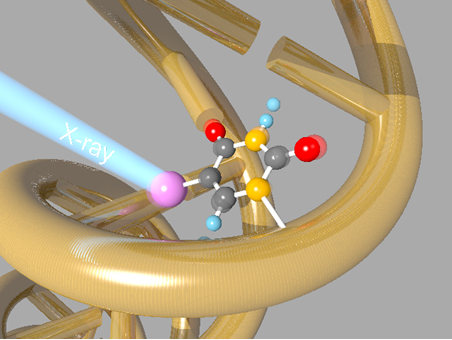X-ray free electron laser reveals radiosensitizing effects at molecular level.
While the effect of radiosensitizing molecules in radiation-based cancer therapies has been known for a long time, the exact molecular mechanisms behind it the capacity of the radiosensitizer to locally augment the radiation damage to tumor cells by intratumoral administration of the agent are yet to be deciphered.
However, an international team of researchers has illustrated how the molecule breaks apart and what ionic fragments are formed via the breakage of the molecular edifice shortly after the ionization, thus shedding light on the role of energetic ions in the initiation of damaging reactions.
Read the news on Tohoku University website

Figure: Scientists have illustrated how the 5-iodouracil molecule (center) – a nucleobase analogue that forms ribonucleic acid (brown) known as a radiosensitizer – breaks apart shortly after X-ray radiation (blue light), resulting in the local production of ‘radiation soup'. © Image courtesy of Kiyonobu Nagaya, Department of Physics, Kyoto University.
